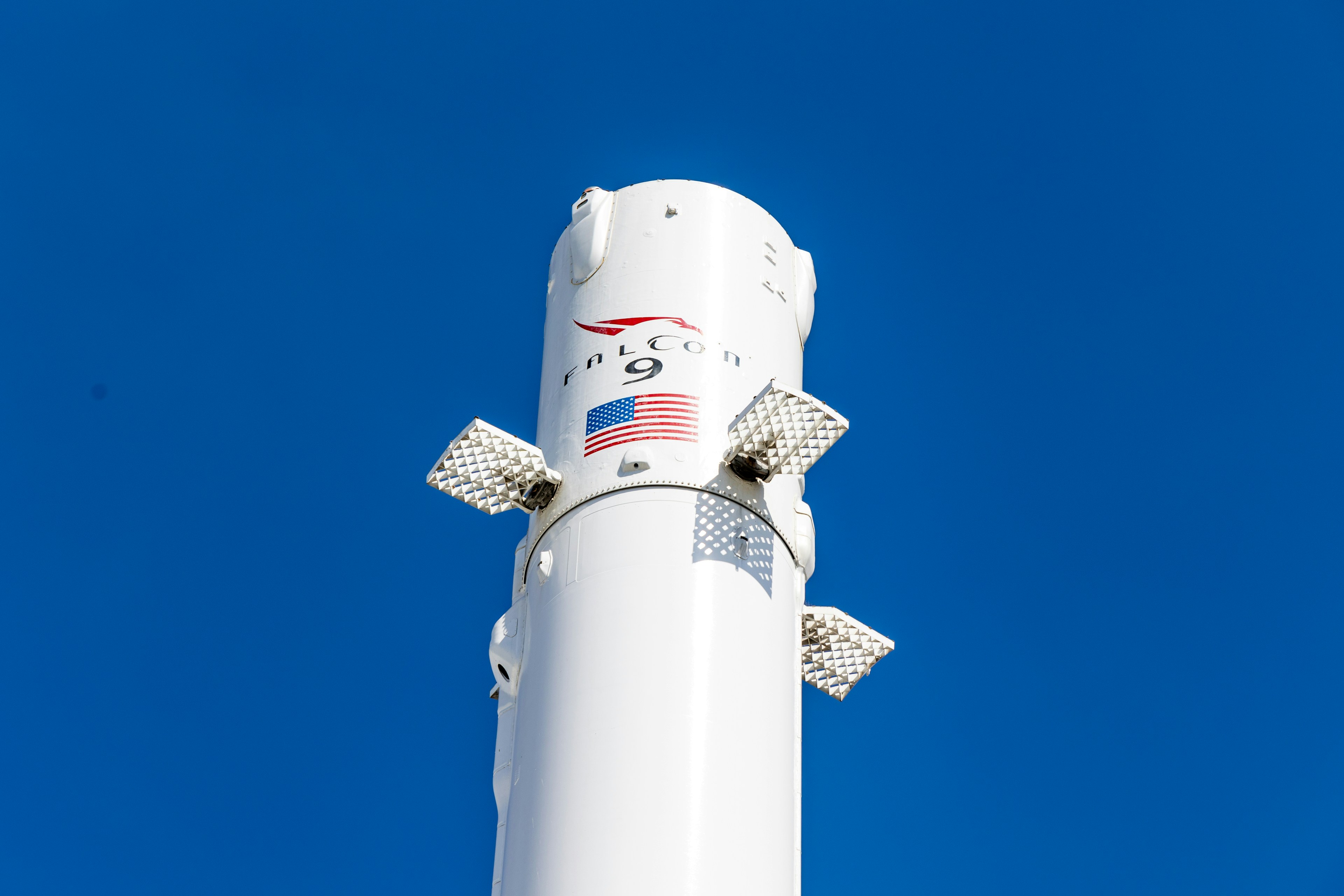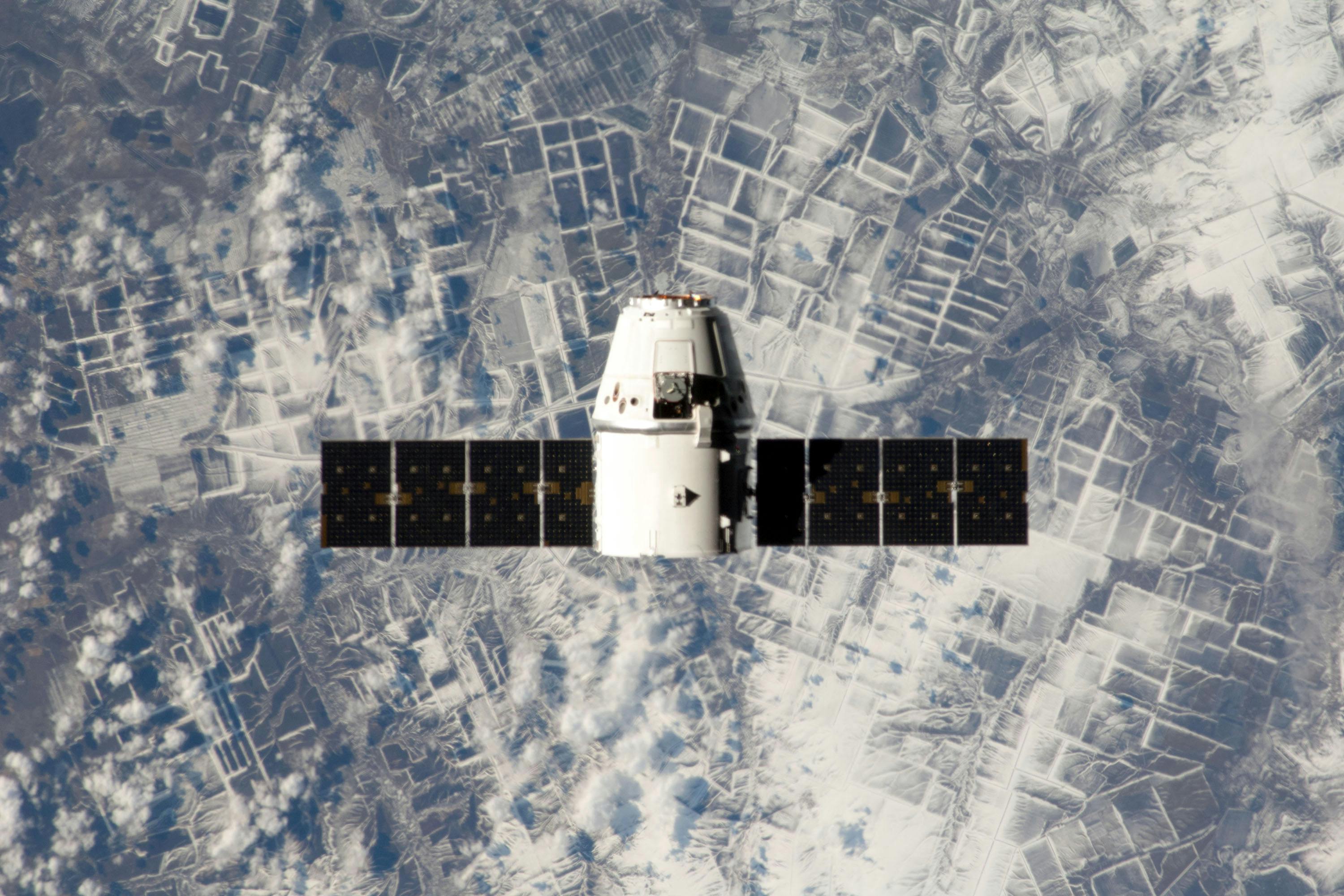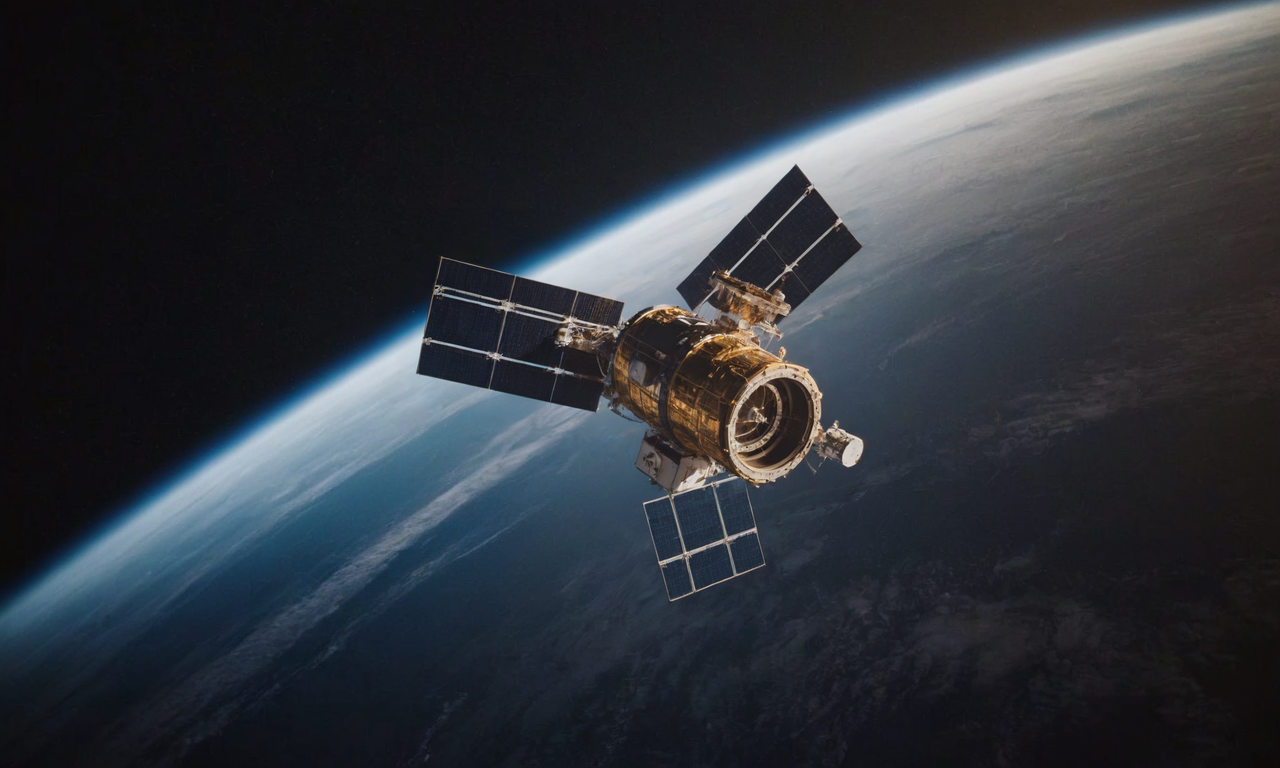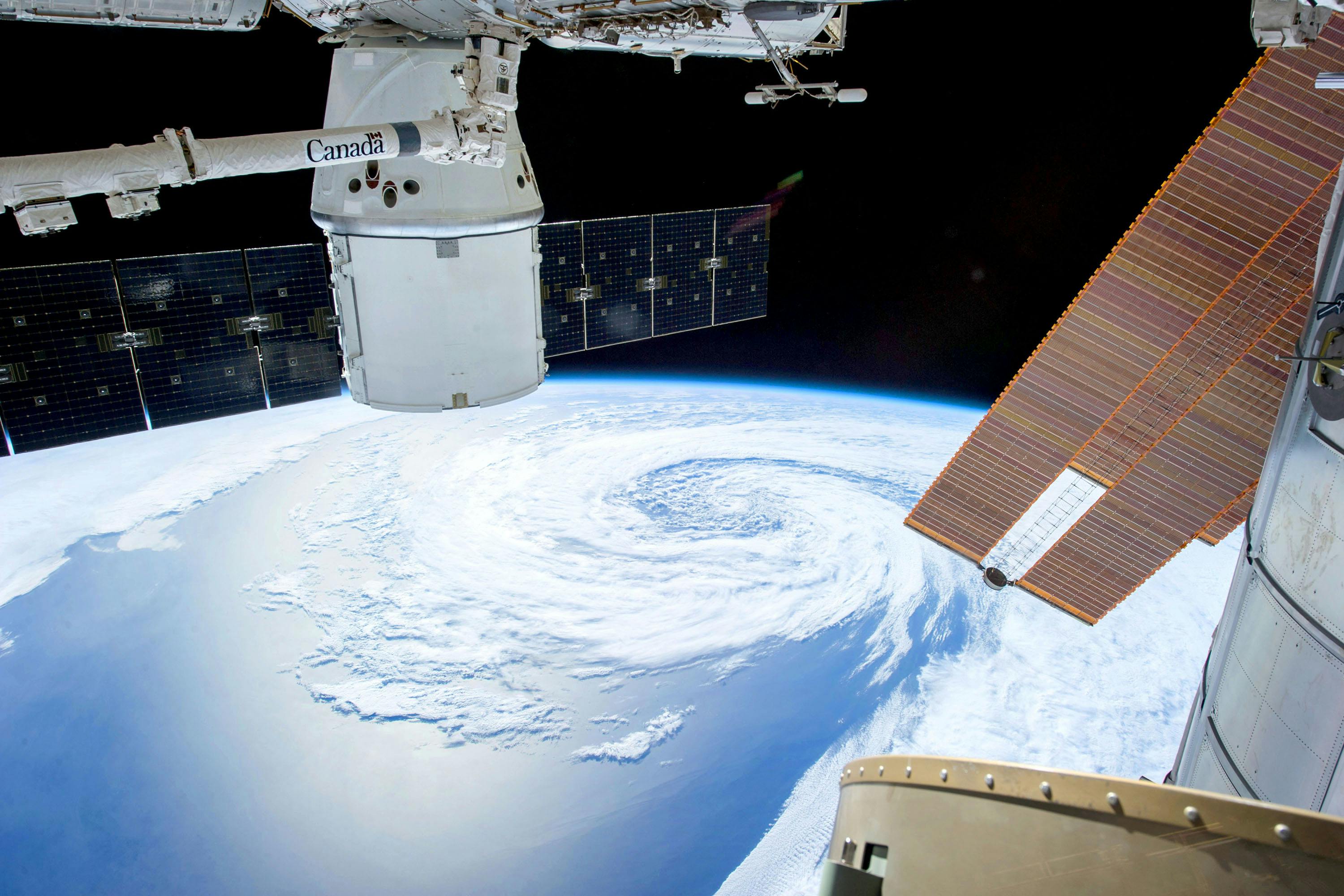· space brief · 6 min read
Space Brief 20 Jul 2025
Today's highlights include a SpaceX launch of Starlink satellites, a pivotal delivery to the Space Force, and significant Senate funding for NASA missions.

📄Top Stories
SpaceX successfully launched two dozen Starlink satellites into low Earth orbit from Vandenberg Space Force Base. Meanwhile, the Space Force has finally received a delayed GPS control system, enhancing the nation’s satellite navigation capabilities. In Washington, Senate appropriators have moved to restore funding for numerous NASA science missions that faced potential cancellation.
📰Detailed Coverage
SpaceX Continues Starlink Expansion
On July 18, SpaceX executed a nighttime launch from California’s Vandenberg Space Force Base, deploying 24 Starlink satellites into low Earth orbit. The Falcon 9 rocket departed at 8:52 p.m. PDT, and precisely eight minutes after liftoff, its first-stage booster made a successful return landing on the “Of Course I Still Love You” drone ship in the Pacific Ocean. This mission marks the booster’s 14th mission, showcasing SpaceX’s ongoing strategy of rapid reuse and cost efficiency.
SpaceX’s Starlink project aims to provide global high-speed internet coverage through a vast constellation of satellites. The recent addition of satellites strengthens their reach, particularly in serving polar regions. Users of our web app can track these new satellites to observe the expansion of the Starlink system.
Read the full story: Space News
Space Force Receives Long-Awaited GPS Control Upgrade
After years of delays, the U.S. Space Force has accepted the delivery of an advanced GPS control system, specifically the OCX software upgrade, from Raytheon. Delivered on July 1, this upgrade is a critical enhancement aimed at improving the robustness and accuracy of GPS signals, essential for both military operations and civilian navigation systems.
The delayed deployment of this system had been a significant concern as GPS technology underpins not only national security but also global transportation and communication networks. This development ensures improved capabilities for the Space Force and reinforces the reliability of services that depend on satellite navigation.
Read the full story: SpaceNews
Senate Supports NASA Mission Continuity
In a recent move, Senate appropriators have decided to reinstate funding for several NASA science missions that were at risk of being scrapped under the 2026 budget plan. This action protects dozens of projects, reflecting legislative commitment to maintaining NASA’s scientific exploration and innovation efforts.
The continuation of these missions is significant as it preserves a vast array of ongoing research, some of which are critical for understanding Earth’s climate and advancing our capabilities in space science and technology. The decision, however, did not address certain flagship programs, leaving some uncertainty about their future.
Read the full story: SpaceNews
Celebrating 50 Years of Space Collaboration
This month marks the 50th anniversary of a historic partnership in space exploration that began in 1975. Amidst a transformative period on Earth, the United States and another nation embarked on a joint mission that has had enduring impacts on international space cooperation. This occasion highlights the value of diplomatic synergy in advancing technological and exploratory frontiers beyond individual national interests.
Such collaborations not only transcend political and cultural boundaries but also catalyze advancements that benefit humanity as a whole, driving progress in satellite technologies and international project partnerships.
Read more: Space Explored
🛰️Satellite Spotlight
- Satellite Name: GGSE 4
- NORAD ID: 02828
- Launch Date: May 31, 1967
- Mission: Electronic Intelligence (ELINT) and ocean surveillance
- Orbit: Low Earth Orbit (LEO)
- Operator: National Reconnaissance Office / Naval Research Laboratory (NRO/NRL)
- Fun Fact: GGSE 4 was part of a series designed to collect oceanographic data and was equipped with sensors for electronic warfare.
Track this satellite in real-time on our web app: Track GGSE 4
🌌Space Weather
Space weather conditions are currently quiet.
Current
R0 - S0 - G0
Last 24 Hour Maximums
R0 - S0 - G0
Recent Alerts
- Continued Alert: Electron 2MeV Integral Flux exceeded 1000 pfu.
- Yesterday Maximum 2MeV Flux: 11583 pfu.
- Potential Impacts: Significant charging to satellite systems with increased risk.
Next 24 Hours
-
Radio Blackouts Probability
- Minor: 40
- Major: 10
- Risk: None
-
Solar Radiation
- Probability: 10
- Risk: None
-
Geomagnetic Storming
- Scale: 0
- Impact: None
- Activity: Low
-
Impact Summary
- No risk of radio blackouts.
- No risk of solar radiation storms.
- Geomagnetic outlook: No G1 (Minor) or greater geomagnetic storms expected. No significant transient or recurrent solar wind features are forecasted.
Long Term Forecast
- Forecast of Solar and Geomagnetic Activity (14 July - 09 August 2025):
- Solar activity is likely to remain low, with a chance for R1-R2 (Minor-Moderate) radio blackouts over the next 27 days due to several complex active regions.
- No proton events expected at geosynchronous orbit.
- Greater than 2 MeV electron flux expected to reach high levels on 20-28 July and 05-06 August.
- Active conditions likely on specific dates: 14 July, 22-24 July, 02-04 August, and 07-09 August. Unsettled conditions expected on 15-17 July, 25 July, and 01 August. Remaining days are likely to be mostly quiet.
🚀Upcoming Space Launches
July 21
- SpaceX Falcon 9:
- O3b mPower 9-10 from Cape Canaveral SFS, FL, USA (21:12 UTC) 2 high-throughput communications satellites in Medium Earth Orbit (MEO) built by Boeing and operated by SES.
July 22
- SpaceX Falcon 9:
- TRACERS from Vandenberg SFB, CA, USA (18:13 UTC) NASA’s Tandem Reconnection and Cusp Electrodynamics Reconnaissance Satellites (TRACERS) mission aims to study magnetic reconnection and its effects on Earth’s atmosphere.
July 24
- SpaceX Falcon 9:
- Starlink Group 10-26 from Cape Canaveral SFS, FL, USA (09:12 UTC) A batch of satellites for SpaceX’s Starlink mega-constellation for global internet coverage.
July 25
- Soyuz 2.1b/Fregat-M:
- Ionosfera-M 3 & 4 from Vostochny Cosmodrome, Siberia, Russian Federation (05:54 UTC) Ionosfera is a constellation of ionospheric and magnetospheric research satellites developed for Roscosmos.
July 26
- Arianespace Vega-C:
- CO3D & MicroCarb from Guiana Space Centre, French Guiana (02:03 UTC) CO3D aims to map the globe in 3D, while MicroCarb targets to track carbon dioxide sources and sinks worldwide.
- SpaceX Falcon 9:
- Starlink Group 17-2 from Vandenberg SFB, CA, USA (02:09 UTC) A batch of satellites for SpaceX’s Starlink mega-constellation.
- Gilmour Space Technologies Eris-1:
- Maiden Flight from Bowen Orbital Spaceport (21:30 UTC) Maiden flight of Gilmour Space’s orbital launch vehicle Eris.
July 29
- SpaceX Falcon 9:
- Starlink Group 13-4 from Vandenberg SFB, CA, USA (15:39 UTC) A batch of satellites for SpaceX’s Starlink mega-constellation.
July 30
- Indian Space Research Organization GSLV Mk II:
- NISAR (NASA-ISRO Synthetic Aperture Radar) from Satish Dhawan Space Centre, India (11:30 UTC) The NASA-ISRO Synthetic Aperture Radar satellite aims to map Earth’s land and ice masses, studying ecological changes and natural hazards.
July 31
- Rocket Lab HASTE:
- JAKE 4 from Wallops Flight Facility, Virginia, USA (00:00 UTC) Sub-orbital launch under Rocket Lab’s Hypersonic Accelerator Suborbital Test Electron (HASTE) program.
Note: Launch dates and times are subject to change due to technical or weather considerations.

Maurice Stellarski





